Located in the South Aru sub-district of Indonesia’s Aru Archipelago, Lutur Village (known locally as Nata Lutur) is approximately 3-4 hours by boat from Dobo. En route to the village, coconut trees line the coastal roads and fill the villagers’ gardens. These trees, and the coconuts they produce, are a similarly prominent feature in the local economic landscape.
Coconuts here are typically processed into copra, with most of the work done by women. In the past, processing was more difficult and time-consuming; coconuts still attached to their shells were burned, sun-dried and then scraped to extract the copra. Today, with the help of a large copra dryer, copra processing has become faster and less labour-intensive. In times of economic hardship, particularly when the sea no longer provides, copra sales provide the villagers with much-needed economic stability.
Working with various partners, the ATSEA-2 Project has been helping the women of Lutur Village develop and process coconuts into Virgin Coconut Oil (VCO), as part of the Project’s Gender Action Plan for the Aru Archipelago, which aims to strengthen women’s customary institutions in sustainable fisheries and local resource management for livelihood improvement.
Ecological Diversity

Lutur Village is home to coastal areas comprising mangroves, rivers, gardens and forest. These areas provide local people with food and daily necessities, as Mama Ena, one of the women from the village explains: “if we want to cook, we get vegetables from the nearby forest, fish and clams from the river; if a child is sick with a fever, we get medicine from the forest.”
Most people in Lutur Village make their living from farming and fishing, growing vegetables and processing coconuts into copra. Women tend to care for the plantations and the household, while the men focus on fishing, bringing in mackerel, red snapper, moonfish, shrimp, lobster, squid and sea cucumbers.
Escalating Expenses, Declining Income
Although natural marine resources appear abundant, income from fishing is uncertain and highly dependent on the season and wind patterns. During the west monsoon, when the wind blows from Asia to Australia, fishermen cannot go to sea at all. Similarly, during the transition from dry to rainy season between August and September, the marine harvest is not profitable. “During these changing seasons, the sea is cold and there are many jellyfish, (but) no fish,” complains Lando, a fisherfolk of this fishing community.
Meanwhile, the cost of living is on the rise. Lutur fisherfolk lament the continuously increasing price of fuel, while daily essentials – rice, flour, cooking oil, sugar, coffee, etc. – are becoming more expensive. Another significant expense is the cost of education for their children, especially if they send them outside the village or to other islands for higher education.
The increasing cost of living has led many in the community to become trapped in debt. For example, fisherfolk often borrow fuel from container ships, which in return also purchase the fish caught by the fishers. Borrowing money from local stores and relatives is also a common solution for meeting daily consumption needs.
Mitigating Income Challenges

Working together with the Sajogyo Institute (the ATSEA-2 Project’s implementation partner in the Aru Archipelago), ATSEA-2 has teamed up with a women’s collective (Pengurus Harian Komunitas/PHKom) called Perempuan AMAN in Lutur Village to begin developing VCO products. Utilising abundant local coconuts in this way is helping to stabilise family finances that are otherwise prone to seasonal fluctuations in the providence of fisheries resources.
To date, four production groups have been formed, each consisting of 8-10 people who work as a team to process and develop the VCO. There are plans in place to provide additional training for these groups, focusing on areas such as improvements in packaging, determining competitive selling prices, effective marketing strategies and proper sales record keeping. These skills are expected to support the people of Lutur Village in utilising the abundant coconut resources throughout the year.
“We have plenty of coconuts here, but (until recently) we didn’t know what to do with them – we just made copra,” says Mama Yaken, one member of Perempuan AMAN. Making VCO has helped to add value to their product. “Hopefully, we can sell it and make extra income,” she adds.
With support from ATSEA-2 and its partners, local businesses and women’s cooperatives in the Aru Archipelago such as Perempuan Aman will be able to face the uncertainty of the future with improved resilience and the knowledge they need to overcome challenges. With further training planned, these groups are ready for the next step in their journey together.
By Shela Herlita dan Dian Yanuardy (Sajogyo Institute)


